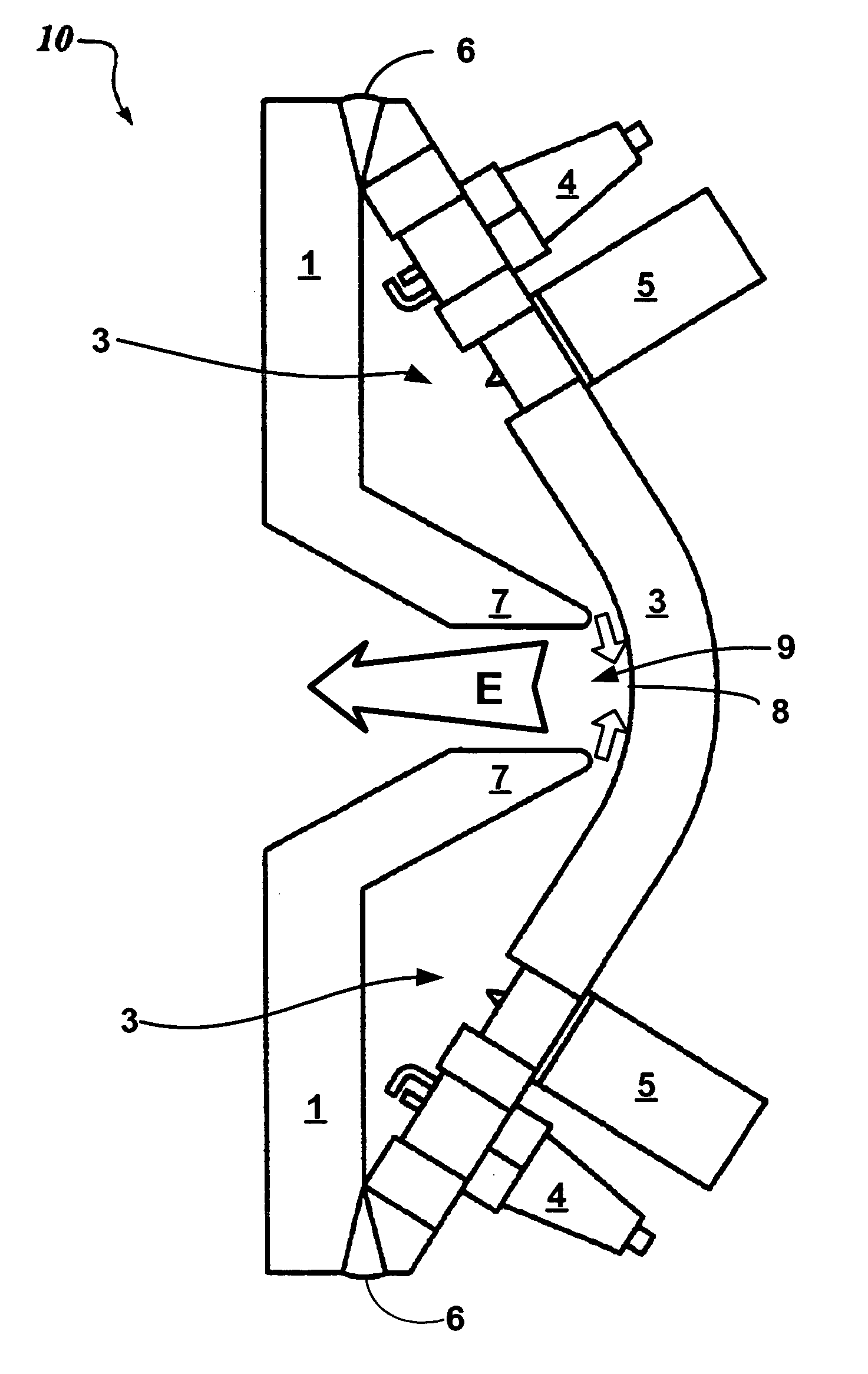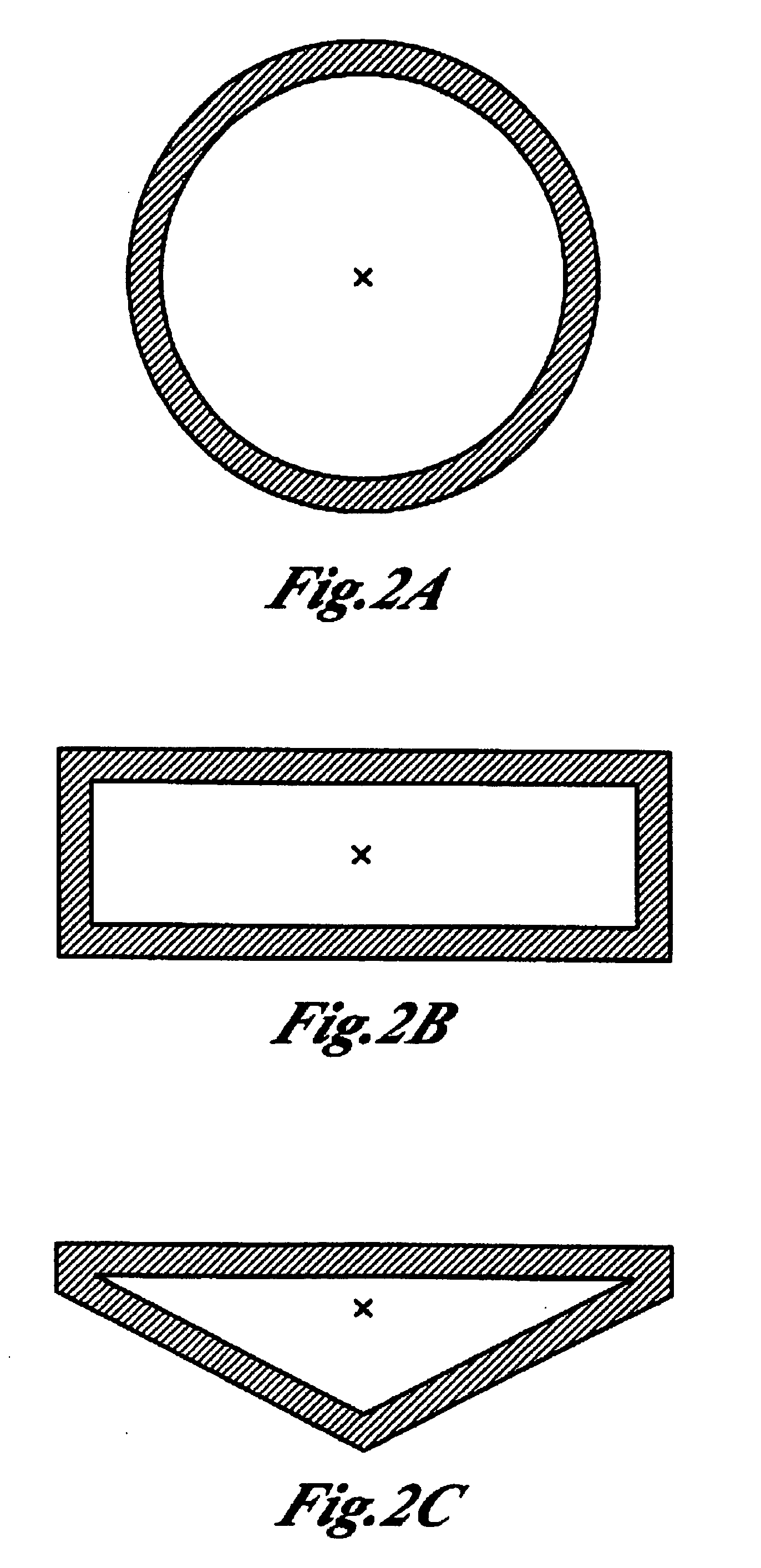The full potential of the
machine industry has yet to be realized in part because of several deficiencies in functionality, features, performance, reliability, cost-effectiveness, and convenience of existing systems.
Several problems are inherent in the conventional systems.
The
combustion in both jet and
rocket engines must contain extremely high internal pressures and are therefore limited by construction material strength.
As the internal combustion pressure increases, the
combustion chamber wall must increase in thickness to contain the pressure, increasing the
combustion chamber weight proportionally and limiting the design.
Also, as the exhaust
nozzle diameter is reduced to increase exhaust speed, cooling the engine and
nozzle becomes increasingly more difficult.
Furthermore, as
internal pressure in the
combustion chamber increases, higher fuel and oxidizer inlet pressures are required to introduce fuel and oxidizer into the combustion chamber, requiring heavier weight pumps that operate at higher
horsepower.
The huge plume of fire trailing the shuttle and other rockets is caused by incomplete combustion of the fuel and oxidizer prior to exiting the exhaust
nozzle.
The fuel and oxidizer igniting outside the engine provide virtually no thrust and are thus wasted.
Furthermore, the continuous ignition of present engines causes
high heat transfer to engine parts, particularly the nozzle orifice, and the
high heat transfer requires the use of costly exotic materials and intricate cooling schemes to preserve the engine structure.
While the prior art addresses many aspects of propulsion devices, it does not teach the use of a
shaped charge in a jet or
rocket engine.
While the general theory behind shaped charges has been known for many years, the prior art has restricted the use of shaped charges to warheads and certain other expendable
detonation devices.
Examples of
shaped charge devices are described in U.S. Pat. No. 5,275,355 to Grosswendt, et al., entitled “Antitank Weapon For Combating a Tank From The Top,” and U.S. Pat. No. 5,363,766 to Brandon, et al., entitled, “
Ramjet Powered, Armor Piercing, High Explosive
Projectile.” Shaped charges in such devices are not used to provide propulsion.
However improved in power efficiency, the use of aerosolized oil-in-gas premixed fuels comes at the expense of increased
hydrocarbon (HC),
Nitrogen Oxides (
NOx), and
carbon monoxide (CO)
pollutant emissions due to the greater difficulty in combusting the lubricating oil pre-mixed in the
gasoline.
Furthermore, two-cycle engines are fuel inefficient because a portion of the incoming air-fuel charge is used to displace the exhaust is unavoidably short circuited to the exhaust port.
However, despite its widespread use, the internal combustion, or
Otto cycle, engine or, in certain instances, a
diesel cycle engine, has received very little technological advancement.
Likewise, each complete cycle of the
internal combustion engine requires four inertial changes for the associated valves, springs, lifters, rocker arms, and push rods, yielding additional total loss of the engine.
Each one of these parts increases the probability of engine failure due to fatigue or wear.
Likewise, this large number of parts increases the amount of
inertial mass that must change four times per cycle, reducing power produced by the
system.
Each moving part is subject to frictional loss between each relative part, adding to
power loss.
Further, it is expensive to manufacture and maintain equipment requiring such a large number of
moving parts.
The resulting structural requirements limit
piston assembly design, increasing
mass and limiting material choice.
Further, transmissions are necessary to amplify the relatively low torque generated by the
reciprocating motion, thus adding weight, cost, complexity and additional power requirements to the overall
system.
Likewise, the reciprocating design limits the combustion product's ability to do useful work because the expansion volume is not equal to the compression volume—combustion heats the gas, thus increasing the expansion volume beyond the initial volume.
Thus, relatively high-pressure combustion gases are exhausted without performing any useful work.
The overall design of Otto, diesel, and other rotary engines is limited by cross-leakage at
high pressure.
More specifically, cross leaking is
internal pressure loss due to overflow from the high-pressure side to the low-pressure side of the system while the pistons move throughout their
stroke.
The excessive number of seals and connecting parts in other internal combustion engines creates cross-leakage liability.
Yet, another limitation of current
rotary engine technology is the internal combustion design of the engines.
The current designs fail to allow for use as external combustion or external
detonation cycle engines.
A further limitation of current engine technology is a lack of design diversity.
The extent of diversity for typical internal engines is limited by a need to drive a common
crankshaft from a plurality of reciprocating motions.
This limited design diversity prevents possible space-saving designs from being developed.
However, current methods to produce
hydrogen use fossil fuels and high temperatures to produce the
hydrogen.
Furthermore, these methods produce
carbon dioxide and
NOx, thus negating any environmental advantages.
Biological processes to produce hydrogen are intriguing, but considerable technical challenges still exist.
Fermentation methods can produce hydrogen at high rates, but require expensive energy sources such as glucose.
Biomass would seem to be ideal as source of glucose, however, the problem with
biological hydrogen production is the same as with biological
ethanol production from
biomass: inefficient degradation of the cellulosic material containing the glucose.
 Login to View More
Login to View More  Login to View More
Login to View More 


